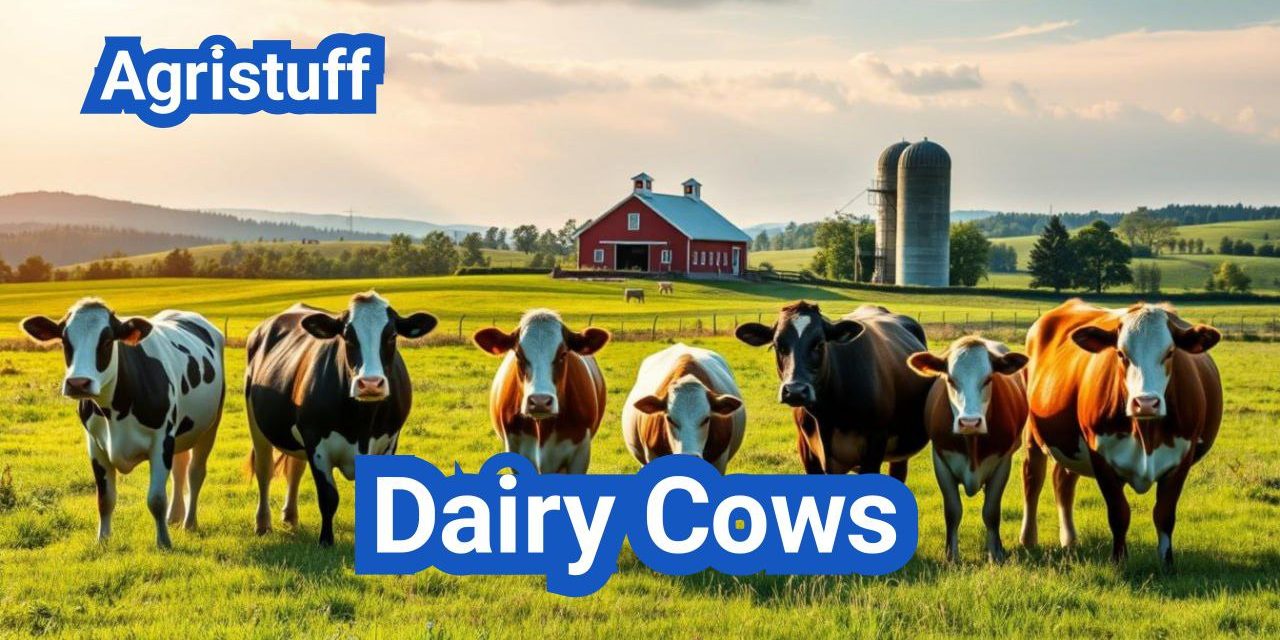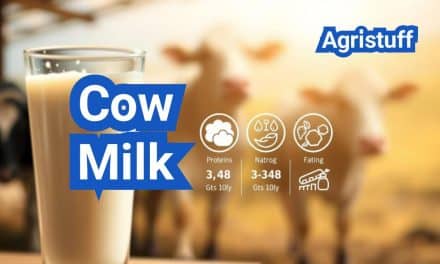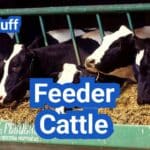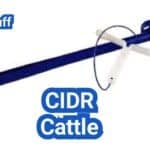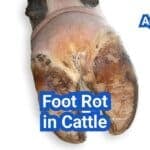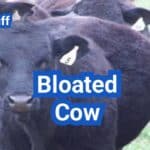The significance of dairy cattle in agriculture and the dairy industry cannot be overstated. These animals are the backbone of milk production, providing the raw material for a wide range of dairy products consumed globally.
Dairy cow breeds vary significantly in terms of their milk production capabilities, with some being more suited to specific dairy farming practices than others. Understanding the different breeds, their lactation cycles, and the basics of maintaining their health is crucial for dairy farmers and those involved in the dairy industry.
Key Takeaways
- Understanding the different dairy cow breeds is essential for dairy farming.
- Lactation cycles play a critical role in milk production.
- Maintaining the health of dairy cattle is vital for their productivity.
- Dairy cow nutrition is a key factor in their overall health and milk production.
- The dairy industry relies heavily on the health and productivity of dairy cows.
The World of Dairy Cows: An Overview
Modern dairy farming is a result of centuries of evolution. The industry has transformed significantly, driven by advances in technology, genetics, and nutrition. Today, dairy farming is a complex and sophisticated business that requires careful management and planning.
The Evolution of Modern Dairy Farming
Dairy farming has a rich history that dates back to ancient times. The practice of milking cows has evolved over the centuries, influenced by various factors such as geography, culture, and technology. In the early days, dairy farming was a small-scale, local activity. However, with the advent of industrialization and technological advancements, dairy farming has become a large-scale operation.
The introduction of new technologies, such as milking machines and automated feeding systems, has significantly improved the efficiency of dairy farming. Additionally, advances in genetics have led to the development of high-yielding dairy breeds, further increasing milk production.
Key developments in modern dairy farming include:
- Advances in milking technology
- Improvements in cow nutrition and health
- Genetic selection for high-yielding breeds
- Increased focus on animal welfare
Economic Significance of the Dairy Industry
The dairy industry is a significant contributor to the global economy. It provides employment opportunities, generates income for farmers and related businesses, and contributes to the GDP of many countries. In the United States alone, the dairy industry generates billions of dollars in economic output each year.
The economic impact of the dairy industry extends beyond the farm gate. It supports a wide range of industries, including feed suppliers, equipment manufacturers, and processors. Moreover, dairy products are an essential part of the food industry, providing consumers with nutritious and affordable options.
“The dairy industry is a vital part of the agricultural sector, providing essential products and contributing to the economy.”
– Dairy Industry Expert
In conclusion, the dairy industry is a complex and dynamic sector that has evolved significantly over the years. Its economic significance cannot be overstated, and it continues to play a vital role in the global economy.
The 7 Major Dairy Cow Breeds

The world of dairy farming is dominated by a few significant breeds known for their milk production. These breeds have been developed over centuries to optimize milk yield, butterfat content, and overall health. Understanding the characteristics of these major dairy cow breeds is essential for dairy farmers to make informed decisions about their herd.
Holstein-Friesian: The Black and White Milk Producers
The Holstein-Friesian breed is one of the most recognizable dairy breeds, known for its black and white markings. Originating from the Netherlands, this breed has become a staple in dairy farming worldwide due to its high milk production capabilities.
- High Milk Yield: Holstein-Friesians are renowned for their ability to produce large quantities of milk, making them a favorite among dairy farmers.
- Adaptability: They are relatively adaptable to various farming systems, although they thrive best in well-managed environments.
Jersey: Compact Cows with High Butterfat Content
The Jersey breed, originating from the Channel Island of Jersey, is prized for its rich milk with high butterfat content. Despite their smaller size, Jersey cows are efficient milk producers and are known for their hardiness.
- Rich Milk: Jersey milk is celebrated for its high butterfat and protein content, making it ideal for cheese and butter production.
- Feed Efficiency: Jerseys are known for their ability to produce high-quality milk on less feed, making them a cost-effective choice.
Brown Swiss: The Oldest Dairy Breed
The Brown Swiss breed is one of the oldest dairy breeds, with a history dating back over 1,000 years. Originating from Switzerland, they are known for their robust health, longevity, and high milk production.
- Longevity: Brown Swiss cows are noted for their long productive lives, reducing the need for frequent replacements.
- Milk Quality: They produce milk with a good balance of protein and fat, suitable for a variety of dairy products.
Guernsey: Golden Milk Producers
The Guernsey breed, from the Channel Island of Guernsey, is known for its rich, golden-colored milk. Guernsey cows are medium-sized, friendly, and efficient milk producers.
- Golden Milk: The milk from Guernsey cows contains a high level of beta-carotene, giving it a distinctive golden color and rich flavor.
- Efficient Grazing: Guernseys are good grazers and can thrive on pasture-based systems, making them suitable for a variety of farming practices.
These four breeds, along with three others, form the backbone of the dairy industry, each contributing their unique characteristics to milk production. By understanding the strengths of each breed, dairy farmers can make informed decisions to optimize their herd’s performance.
How to Select the Best Dairy Cow Breed for Your Farm
The right dairy cow breed can significantly impact the productivity and profitability of your dairy operation. Selecting a breed that aligns with your farm’s specific conditions, resources, and goals is crucial for achieving success in dairy farming.
Assessing Your Farm’s Climate and Resources
Before choosing a dairy cow breed, it’s essential to assess your farm’s climate and available resources. Different breeds have varying levels of tolerance to heat, cold, and humidity. For instance, breeds like the Holstein-Friesian are more suited to temperate climates, while breeds such as the Jersey can adapt to a variety of conditions.
Consider the quality and quantity of feed available, as well as the housing and milking facilities. A breed that requires high-quality feed may not be suitable if your farm primarily produces lower-quality forage.
Matching Breed Characteristics to Your Goals
Your dairy farming goals play a significant role in determining the most appropriate breed for your farm. If your primary goal is high milk production, breeds known for their high yield, such as the Holstein-Friesian, might be the best choice.
However, if you’re looking for a breed that offers a balance between milk production and other factors like butterfat content or hardiness, you might consider breeds like the Brown Swiss or Guernsey. It’s also important to consider the market demand in your area; for example, if there’s a high demand for A2 milk, selecting breeds that produce A2 milk could be beneficial.
Best Dairy Cow Breeds for Beginners
For those new to dairy farming, selecting a breed that is known for its hardiness and ease of management can be particularly advantageous. Breeds like the Jersey and Guernsey are often recommended for beginners due to their robust nature and relatively low maintenance requirements.
Additionally, these breeds are known for their high butterfat content, which can be a valuable trait depending on your market. It’s also worth considering crossbreeds, as they can offer the benefits of hybrid vigor, potentially leading to healthier animals and improved productivity.
Understanding A1 vs. A2 Milk: Production and Benefits

Understanding the difference between A1 and A2 milk is crucial for dairy farmers looking to diversify their products and cater to specific consumer needs. The distinction between these two types of milk lies in their protein composition, which affects their nutritional value and consumer appeal.
The Science Behind Milk Protein Types
Milk contains various proteins, with beta-casein being one of the primary proteins. A1 and A2 milk differ in the type of beta-casein they contain. A2 milk contains only the A2 type of beta-casein, while A1 milk contains the A1 type. Research suggests that A2 milk may be easier to digest for some consumers due to its protein structure.
The production of A1 and A2 milk is determined by the genetics of the dairy cow. The A2 gene is dominant, and cows that are homozygous for the A2 gene (A2A2) will produce A2 milk. Cows that are heterozygous (A1A2) will produce a mix of A1 and A2 milk, while those homozygous for the A1 gene (A1A1) will produce A1 milk.
How to Test Your Herd for A2 Genetics
Testing your dairy herd for A2 genetics involves genetic testing, which can be done through various methods, including DNA sampling. This process helps identify cows that are likely to produce A2 milk, allowing farmers to make informed breeding decisions.
To test for A2 genetics, farmers can follow these steps:
- Consult with a genetic testing service to determine the best testing method for your herd.
- Collect DNA samples from your cows, typically through hair or blood samples.
- Submit the samples for analysis to identify the genetic makeup of your cows regarding the A1 and A2 genes.
- Use the test results to inform your breeding program, selecting for cows that are more likely to produce A2 milk.
Marketing A2 Milk as a Premium Product
For dairy farmers who have herds producing A2 milk, marketing this milk as a premium product can be a lucrative strategy. A2 milk is perceived to have health benefits, including being easier to digest, which can appeal to consumers looking for dairy products with additional health benefits.
To successfully market A2 milk, consider the following strategies:
- Highlight the health benefits of A2 milk in your marketing materials.
- Obtain certification for your A2 milk products to build consumer trust.
- Target health-conscious consumers through appropriate marketing channels.
By understanding the differences between A1 and A2 milk, testing your herd for A2 genetics, and effectively marketing A2 milk, dairy farmers can capitalize on the growing demand for premium dairy products.
The Complete Lactation Cycle of Dairy Cows
The lactation cycle of dairy cows can be divided into four main stages: early, mid, and late lactation, and the dry period. Understanding these stages is crucial for optimizing milk production and maintaining the health of the dairy herd.
Early Lactation (0-100 Days)
During early lactation, dairy cows are at their peak milk production. This stage is critical for setting the tone for the entire lactation cycle. Nutritional management is key, as cows require a diet rich in energy and protein to support high milk production. A well-balanced ration can help prevent metabolic disorders and support the cow’s overall health.
Monitoring milk production and adjusting feed rations accordingly is essential during this stage. Farmers should also be vigilant for signs of nutritional deficiencies or health issues that could impact milk production.
Mid-Lactation (100-200 Days)
In mid-lactation, milk production typically stabilizes, and the cow’s nutritional needs may change. Adjusting feed rations to match the cow’s energy and protein requirements is crucial for maintaining milk production and overall health. This stage is also important for reproductive management, as cows are typically bred during this period.
Late Lactation (200-305 Days)
During late lactation, milk production gradually declines, and the cow’s nutritional needs continue to evolve. Farmers should focus on maintaining the cow’s overall health and preparing her for the dry period. This may involve adjusting feed rations and monitoring the cow’s body condition score.
The Dry Period (45-60 Days)
The dry period is a critical stage in the lactation cycle, as it allows the cow to rest and rejuvenate before the next lactation. Proper management during this stage is essential for preventing health issues and ensuring a successful next lactation. Farmers should focus on providing a comfortable environment and a well-balanced diet to support the cow’s nutritional needs.
Monitoring the cow’s health and body condition during the dry period is crucial for a successful transition into the next lactation.
How to Effectively Manage Lactation Cycles

Effective lactation cycle management is crucial for dairy farm productivity. It involves a series of strategic decisions and actions that impact milk production, cow health, and overall farm efficiency.
Setting Up a Milk Production Monitoring System
To manage lactation cycles effectively, dairy farmers need to set up a robust milk production monitoring system. This involves:
- Regular milk yield recording
- Component testing (fat, protein, somatic cell count)
- Using data to identify trends and anomalies
By closely monitoring milk production, farmers can make informed decisions about feed rations, health interventions, and breeding strategies.
Adjusting Feed Rations Throughout Lactation
Nutritional management is critical throughout the lactation cycle. As milk production peaks and then declines, feed rations need to be adjusted accordingly.
Key considerations include:
- Energy and protein requirements
- Forage quality and availability
- Concentrate supplementation
By tailoring feed rations to the stage of lactation, farmers can optimize milk production while maintaining cow health.
Managing the Transition to Dry Period
The transition to the dry period is a critical phase in the lactation cycle. Proper management during this time is essential for cow health and future milk production.
Best practices include:
- Drying off procedures to prevent mastitis
- Nutritional adjustments to support cow condition
- Monitoring cow health and body condition score
Preparing for the Next Lactation
Effective lactation cycle management also involves preparing cows for their next lactation. This includes:
- Monitoring cow condition and health during the dry period
- Implementing appropriate vaccination and parasite control programs
- Planning for the next breeding cycle
By focusing on these areas, dairy farmers can help ensure a successful subsequent lactation.
Reproduction Management in Dairy Cows

Reproduction management plays a vital role in maintaining the productivity and profitability of dairy farms. Effective reproduction management involves a series of practices aimed at optimizing the reproductive performance of dairy cows.
The reproductive cycle of dairy cows is complex and influenced by various factors, including genetics, nutrition, and health. Dairy farmers must be knowledgeable about these factors to manage their herd’s reproductive health effectively.
Detecting Heat Signs Accurately
Detecting heat signs accurately is crucial for successful reproduction management. Dairy cows typically exhibit estrus behavior, also known as “heat,” when they are ready to be bred. Farmers can use various methods to detect heat, including visual observation, pedometer systems, and hormonal testing.
Key signs of estrus in dairy cows include:
- Restlessness and increased activity
- Vocalization and mounting behavior
- Clear vaginal discharge
Timing Insemination for Optimal Conception
Timing insemination correctly is critical for achieving optimal conception rates. The optimal time for insemination is typically during the late estrus phase, about 12-18 hours after the onset of estrus.
| Timing of Insemination | Conception Rate |
|---|---|
| Early Estrus | Lower Conception Rate |
| Late Estrus (12-18 hours) | Higher Conception Rate |
| Post-Estrus | Lower Conception Rate |
Pregnancy Confirmation Methods
Pregnancy confirmation is an essential step in reproduction management. Various methods are available, including ultrasound examination, rectal palpation, and milk progesterone testing.
Ultrasound examination is a reliable method for early pregnancy detection, typically performed around 30-40 days post-insemination.
Managing Pregnant Cows
Managing pregnant cows involves providing appropriate nutrition, monitoring their health, and preparing them for calving. Proper care during this period is vital for the health of both the cow and the calf.
By implementing effective reproduction management practices, dairy farmers can improve their herd’s reproductive performance, increase productivity, and enhance the overall profitability of their operation.
Calving and Colostrum Management

Proper management during the calving process and adequate colostrum intake are vital for calf health. Effective calving and colostrum management practices are essential for reducing the risk of disease and ensuring the overall well-being of both the cow and the calf.
Setting Up a Proper Calving Area
Creating a clean and comfortable calving area is crucial for minimizing the risk of infection and stress during the calving process. The area should be well-bedded, draft-free, and easily accessible for monitoring and assistance.
Key considerations for a calving area include:
- Cleanliness and dryness to prevent infections
- Adequate space for the cow to move comfortably
- Easy access for farm staff to monitor and assist
- Protection from extreme weather conditions
Monitoring and Assisting During Calving
Close monitoring of the cow during calving is essential to identify any potential issues early. Farm staff should be trained to recognize the signs of normal and difficult calvings.
Assistance should be provided when necessary to ensure a safe delivery. This may involve gently pulling the calf or, in more complicated cases, seeking veterinary assistance.
Collecting and Testing Colostrum Quality
High-quality colostrum is rich in antibodies and nutrients essential for the newborn calf. The first milking after calving should be collected and tested for quality.
Colostrum quality can be assessed by:
- Measuring the immunoglobulin (IgG) concentration
- Checking for signs of contamination or mastitis
- Evaluating the color and consistency
Ensuring Proper Colostrum Intake for Calves
Calves should receive colostrum within the first few hours of birth, as the ability to absorb antibodies from colostrum decreases over time.
The recommended amount of colostrum is at least 4-6 quarts within the first 6 hours, divided into multiple feedings if necessary. Ensuring proper colostrum intake is critical for providing calves with the necessary immunity and nutrients for their early development.
Essential Nutrition for Dairy Cows

Understanding the nutritional requirements of dairy cows is crucial for optimizing milk production and maintaining their overall health. Dairy cows have complex nutritional needs due to their ruminant digestive system and varying production stages.
Understanding the Ruminant Digestive System
The ruminant digestive system is unique and plays a significant role in how dairy cows process their food. It consists of a four-chambered stomach, including the rumen, reticulum, omasum, and abomasum. This system allows cows to break down and extract nutrients from plant-based foods that are otherwise difficult to digest.
Nutritional Components: The ruminant digestive system relies on a balance of fiber, proteins, carbohydrates, and fats to function optimally. For instance, fiber is crucial for maintaining rumen health, while proteins are essential for milk production.
Formulating Balanced Rations by Production Stage
Dairy cows require different nutritional levels at various stages of their lactation cycle. Formulating balanced rations involves considering the cow’s production stage, milk yield, and overall health.
| Production Stage | Nutritional Requirements |
|---|---|
| Early Lactation | High energy and protein to support milk production |
| Mid-Lactation | Balanced diet to maintain milk production and cow health |
| Late Lactation | Reduced energy and protein as milk production decreases |
Monitoring Feed Intake and Adjusting Diets
Monitoring feed intake is crucial to ensure that dairy cows are consuming the necessary nutrients. Adjustments to their diets may be needed based on factors such as milk production levels, body condition scoring, and overall health.
“The key to successful dairy cow nutrition is not just providing a balanced diet, but also ensuring that the cows are consuming enough to meet their nutritional needs.”
— Dairy Nutrition Expert
Preventing Common Nutritional Disorders
Nutritional disorders can significantly impact dairy cow health and milk production. Common disorders include subclinical ketosis, hypocalcemia (milk fever), and laminitis. Preventing these disorders involves careful diet formulation, monitoring cow health, and making adjustments as necessary.
- Subclinical ketosis: Monitor for signs of negative energy balance and adjust diets accordingly.
- Hypocalcemia: Ensure adequate calcium intake and consider supplementation strategies.
- Laminitis: Maintain a balanced diet and monitor hoof health.
By understanding the nutritional needs of dairy cows and implementing strategies to meet those needs, dairy farmers can optimize milk production and maintain the overall health of their herd.
CNMP Nutrient Management on Dairy Farms

The Comprehensive Nutrient Management Plan (CNMP) is a critical tool for dairy farmers to balance nutrient inputs and outputs. Effective nutrient management is essential for maintaining soil health, optimizing crop yields, and minimizing environmental impact.
Developing a Comprehensive Nutrient Management Plan
A well-structured CNMP involves assessing the farm’s nutrient budget, including inputs from fertilizers, manure, and feed, as well as outputs through crops, milk, and manure exports. Key components of a CNMP include:
- Soil testing and analysis to determine nutrient levels and pH
- Manure analysis to determine nutrient content
- Crop selection and rotation planning to optimize nutrient uptake
- Manure application planning to match crop needs
By developing a comprehensive plan, dairy farmers can reduce waste, minimize environmental impact, and improve farm productivity.
Manure Storage and Handling Best Practices
Proper manure storage and handling are crucial for maintaining water quality and reducing odors. Best practices include:
- Designing manure storage facilities to prevent leakage and overflow
- Implementing regular cleaning and maintenance schedules
- Using covers or other odor-reducing technologies
- Developing a manure application plan that considers weather conditions and soil moisture
Environmental Compliance and Sustainability
Dairy farmers must comply with environmental regulations related to nutrient management, including those related to water quality and air emissions. Key strategies for environmental compliance include:
- Monitoring soil and water quality regularly
- Maintaining accurate records of nutrient applications and crop yields
- Implementing conservation practices such as buffer strips and cover crops
- Staying up-to-date with changing regulations and best management practices
By prioritizing nutrient management and environmental compliance, dairy farmers can contribute to a more sustainable food system while maintaining a profitable and productive farm operation.
How to Prevent and Treat Mastitis
Effective mastitis prevention is crucial for maintaining healthy dairy cows and maximizing milk yield. Mastitis, an inflammation of the udder, can lead to significant economic losses due to reduced milk production, treatment costs, and potential long-term damage to the cow’s udder.
Implementing Effective Milking Procedures
Proper milking techniques are fundamental in preventing mastitis. This includes ensuring the milker’s hands are clean, using a pre-milking teat dip to reduce bacterial load, and employing a consistent milking routine. Post-milking teat dipping is also crucial as it helps to kill any bacteria that may have been introduced during the milking process.
Monitoring Somatic Cell Counts
Somatic Cell Count (SCC) is a key indicator of udder health. Regular monitoring of SCC through milk testing can help in early detection of mastitis. Bulk tank SCC and individual cow SCC should be regularly reviewed to identify any increases that may indicate mastitis.
Early Detection Strategies
Early detection of mastitis involves regular observation of the cows for signs of udder inflammation, such as swelling, heat, or pain, and changes in milk appearance, like clots or discoloration. Daily monitoring and maintaining detailed records can help in identifying mastitis cases early, allowing for prompt intervention.
Treatment Protocols and Record Keeping
Effective treatment of mastitis involves the use of appropriate antibiotics, selected based on the causative pathogens and their sensitivity. Accurate record keeping is essential for tracking treatment outcomes, identifying recurring issues, and making informed decisions about cow health management.
By implementing these strategies, dairy farmers can significantly reduce the incidence of mastitis, improve cow health, and maintain high milk quality.
Body Condition Scoring: A Practical Guide

Body condition scoring is a vital tool for dairy farmers to assess the nutritional status and overall health of their herd. This scoring system allows farmers to make informed decisions about feeding, breeding, and health management, ultimately impacting the productivity and well-being of their dairy cows.
How to Accurately Score Body Condition
Accurate body condition scoring involves evaluating the amount of fat cover over the cow’s body, particularly around the lumbar region and the base of the tail. The scoring scale typically ranges from 1 to 5, with 1 being emaciated and 5 being obese. A score of 3 is generally considered optimal for dairy cows. To score accurately, farmers should:
- Observe the cow from behind and from the side.
- Feel the loin area and the base of the tail for fat cover.
- Use a consistent scoring system to monitor changes over time.
Target Scores Throughout the Lactation Cycle
The ideal body condition score varies throughout the lactation cycle. During early lactation, a score of 2.5 to 3 is acceptable as the cow mobilizes body reserves for milk production. By peak lactation, the score should not drop below 2 to avoid excessive weight loss. As lactation progresses, the score should gradually increase to around 3 to 3.5 by the dry period to support the next lactation.
Corrective Actions for Poor Body Condition
If a cow’s body condition score is too low or too high, corrective actions are necessary. For underconditioned cows, increasing the energy density of the diet can help. This might involve adjusting the ration to include more high-energy feeds. For overconditioned cows, reducing the energy intake and increasing exercise can help achieve a more optimal score. Regular monitoring and adjustments are key to maintaining optimal body condition throughout the lactation cycle.
By implementing a consistent body condition scoring system, dairy farmers can improve the health, productivity, and reproductive efficiency of their herd, ultimately enhancing the overall sustainability of their dairy operation.
Managing Heat Stress in Dairy Cows

Heat stress can significantly impact dairy cow health and milk production, making effective management strategies essential. Dairy cows are sensitive to temperature fluctuations, and high temperatures can lead to decreased productivity and health issues.
Recognizing Signs of Heat Stress
Identifying heat stress in dairy cows is crucial for implementing timely interventions. Common signs include:
- Increased respiration rate
- Decreased feed intake
- Increased body temperature
- Reduced milk production
Monitoring these signs allows farmers to take corrective actions to alleviate heat stress.
Designing Effective Cooling Systems
Effective cooling systems are vital for mitigating heat stress in dairy cows. Some strategies include:
- Installing fans and sprinklers in barns and milking parlors
- Providing shade for cows in pasture-based systems
- Utilizing cooling pads or mattresses in resting areas
These cooling measures can significantly improve dairy cow comfort during hot weather.
Nutritional Adjustments During Hot Weather
Nutritional adjustments play a critical role in managing heat stress. Strategies include:
- Offering feed during cooler parts of the day
- Increasing the energy density of feed
- Ensuring adequate water intake
These adjustments help maintain the nutritional balance and comfort of dairy cows during heat stress.
Monitoring and Measuring Heat Stress Impact
Regular monitoring is essential to understand the impact of heat stress on dairy cows. This includes:
- Tracking milk production and composition
- Monitoring cow behavior and health
- Using temperature-humidity index (THI) to assess heat stress risk
By measuring these factors, farmers can make informed decisions to mitigate the effects of heat stress.
Preventing and Treating Lameness
Effective lameness prevention strategies are crucial for maintaining healthy dairy cows. Lameness is a significant issue that affects not only the welfare of the animals but also the overall productivity and profitability of dairy farms.
Implementing Regular Hoof Trimming Programs
Regular hoof trimming is a critical component of lameness prevention. It involves trimming the hooves of dairy cows at regular intervals to prevent overgrowth and irregular wear. Proper hoof trimming can help prevent lameness by reducing the risk of hoof cracks and abscesses.
To implement an effective hoof trimming program, dairy farmers should:
- Trim hooves every 6-12 weeks, depending on the cow’s age, breed, and living conditions.
- Use proper trimming techniques and equipment to avoid causing injury to the cow.
- Maintain accurate records of trimming activities to track the health of individual cows.
Designing Cow-Friendly Facilities
The design of dairy cow facilities can significantly impact the risk of lameness. Cow-friendly facilities are designed to reduce stress and discomfort on the cows’ hooves and legs. Key features include:
- Comfortable flooring surfaces that are not too abrasive or slippery.
- Adequate space for cows to move around comfortably.
- Properly designed stalls and holding areas that minimize standing time.
Early Intervention Strategies
Early detection and intervention are critical in managing lameness. Dairy farmers should be vigilant in monitoring their cows for signs of lameness, such as changes in gait or reluctance to bear weight on a particular leg.
Upon detecting lameness, farmers should:
- Isolate the affected cow to prevent further stress.
- Conduct a thorough examination to determine the cause of lameness.
- Implement appropriate treatment protocols.
Treatment Protocols for Common Hoof Issues
Different causes of lameness require different treatment approaches. Common hoof issues include:
- Hoof abscesses, which may require drainage and antibiotic treatment.
- Digital dermatitis, which can be treated with topical antibiotics and proper hoof care.
- Laminitis, which requires a comprehensive treatment plan including changes to diet and living conditions.
By implementing regular hoof trimming programs, designing cow-friendly facilities, and adopting early intervention strategies, dairy farmers can significantly reduce the incidence of lameness in their herds.
Dairy Animal Welfare Best Practices
The importance of dairy animal welfare cannot be overstated, as it directly impacts the productivity and sustainability of dairy operations. Ensuring the well-being of dairy cows is not only an ethical consideration but also a critical factor in maintaining a successful and profitable dairy farm.
Comfortable Housing Environments
Creating a comfortable housing environment is fundamental to dairy cow welfare. This includes providing adequate space, appropriate ventilation, and comfortable resting areas. Cow comfort is directly linked to milk production and overall health.
A well-designed barn can significantly improve cow welfare. For instance, incorporating features such as sand bedding, adequate stall size, and proper ventilation can reduce the risk of health issues and improve cow comfort.
| Housing Feature | Benefits |
|---|---|
| Adequate Stall Size | Reduces lameness and improves resting comfort |
| Proper Ventilation | Reduces heat stress and improves air quality |
| Sand Bedding | Provides comfort and reduces the risk of lameness |
Reducing Stress During Handling and Transport
Reducing stress during handling and transport is crucial for dairy cow welfare. This can be achieved by implementing gentle handling practices, minimizing mixing of cows from different groups, and ensuring that transportation vehicles are well-ventilated and comfortable.
“Handling cattle requires patience, understanding, and a calm demeanor. The goal is to move cattle in a quiet, efficient manner, avoiding the use of force or loud noises.”
Temple Grandin, Animal Scientist
Implementing Pain Management Protocols
Pain management is a critical aspect of dairy animal welfare. This includes regular hoof trimming to prevent lameness, using appropriate pain relief during medical procedures, and monitoring for signs of pain or discomfort.
Effective pain management protocols can significantly improve the quality of life for dairy cows. For example, administering pain relief during hoof trimming can reduce discomfort and stress.
Meeting Behavioral Needs of Dairy Cows
Understanding and meeting the behavioral needs of dairy cows is essential for their welfare. This includes providing adequate space for movement, allowing social interaction, and ensuring access to feed and water.
Dairy cows are social animals and benefit from being in groups. Ensuring that they have enough space to move and interact can reduce stress and improve overall welfare.
Modern Milking Procedures and Equipment
Modern dairy farming has revolutionized milking procedures, incorporating advanced technology to improve efficiency and milk quality. The dairy industry has seen a significant shift towards more efficient and hygienic milking practices, driven by advances in technology and changing consumer demands.
Traditional vs. Robotic Milking Systems
Dairy farmers now have the option to choose between traditional milking systems and robotic milking systems. Traditional milking systems involve manual attachment of milking units and are often more labor-intensive. In contrast, robotic milking systems automate the milking process, allowing for more flexibility and reduced labor costs. Robotic milking systems can also monitor milk production and cow health in real-time, enabling early detection of potential issues.
Proper Pre-Milking and Post-Milking Routines
Maintaining proper pre-milking and post-milking routines is crucial for ensuring milk quality and cow health. Pre-milking routines typically involve cleaning and disinfecting the udder and teats, while post-milking routines include teat dipping and monitoring for signs of mastitis. These routines help prevent bacterial contamination and promote overall udder health.
Maintaining Milk Quality Standards
Milk quality is a top priority in dairy farming, and maintaining high standards requires careful attention to detail. Factors such as cow health, milking hygiene, and equipment maintenance all play a role in determining milk quality. Regular testing and monitoring of milk composition and bacterial counts help farmers identify areas for improvement.
Equipment Maintenance and Sanitation
Regular maintenance and sanitation of milking equipment are essential for preventing bacterial contamination and ensuring milk quality. This includes daily cleaning and sanitizing of equipment, as well as regular maintenance checks to identify and address any issues. Proper equipment maintenance also helps extend the lifespan of the equipment and reduce downtime.
Building a Sustainable Dairy Operation
Building a sustainable dairy operation requires careful consideration of various factors, including breed selection, lactation management, and cow health. By understanding the characteristics of different dairy cow breeds and implementing effective lactation cycle management, dairy farmers can optimize milk production while maintaining the well-being of their herd.
A sustainable dairy operation also involves adopting best practices in nutrition, reproduction management, and cow comfort. Implementing proper milking procedures, managing heat stress, and preventing common health issues like mastitis and lameness are crucial. By integrating these practices, dairy farmers can enhance the sustainability of their operations, improve milk quality, and promote environmental stewardship.
Dairy farming sustainability is not just about maintaining a profitable business; it’s also about ensuring the long-term viability of the operation while minimizing its environmental footprint. By focusing on cow health, efficient resource use, and innovative management strategies, dairy farmers can build a sustainable dairy operation that benefits both their business and the environment.
FAQ
What are the 7 major dairy cow breeds?
The 7 major dairy cow breeds are Holstein-Friesian, Jersey, Brown Swiss, Guernsey, Ayrshire, Milking Shorthorn, and Red and White Holstein.
Do dairy cows have to be pregnant to produce milk?
No, dairy cows do not have to be pregnant to produce milk. They are typically milked for around 305 days after calving, and then given a dry period of about 45-60 days before the next calving.
What is the difference between A1 and A2 milk?
A1 and A2 milk differ in the type of beta-casein protein present. A1 milk contains the A1 protein, while A2 milk contains the A2 protein. Some research suggests that A2 milk may be easier to digest for some people.
How do you manage lactation cycles in dairy cows?
Managing lactation cycles involves monitoring milk production, adjusting feed rations, and preparing for the dry period and the next lactation.
What are the key aspects of reproduction management in dairy cows?
Reproduction management involves detecting heat signs accurately, timing insemination for optimal conception, confirming pregnancy, and managing pregnant cows.
How do you prevent and treat mastitis in dairy cows?
Preventing and treating mastitis involves implementing effective milking procedures, monitoring somatic cell counts, and using early detection strategies and treatment protocols.
What is body condition scoring, and why is it important?
Body condition scoring is a method of evaluating a cow’s nutritional status and body fat reserves. It’s essential for managing nutrition and maintaining optimal body condition throughout the lactation cycle.
How do you manage heat stress in dairy cows?
Managing heat stress involves recognizing signs of heat stress, designing effective cooling systems, making nutritional adjustments, and monitoring the impact of heat stress.
What are the best practices for dairy animal welfare?
Best practices for dairy animal welfare include creating comfortable housing environments, reducing stress during handling and transport, implementing pain management protocols, and meeting the behavioral needs of dairy cows.
What are the differences between traditional and robotic milking systems?
Traditional milking systems involve manual milking, while robotic milking systems automate the milking process. Robotic systems can improve efficiency and reduce labor costs but require significant investment.
How do you develop a comprehensive nutrient management plan for a dairy farm?
Developing a comprehensive nutrient management plan involves assessing the farm’s nutrient needs, managing manure storage and handling, and ensuring environmental compliance and sustainability.
What are the nutritional needs of dairy cows, and how do you formulate balanced rations?
Dairy cows require a balanced diet that meets their nutritional needs, including energy, protein, and other essential nutrients. Formulating balanced rations involves understanding the ruminant digestive system and adjusting diets according to production stage.
Conclusion of: Dairy Cows
What “dairy cows” means for U.S. farms
In U.S. agriculture, dairy cows are specialized cattle bred and managed to convert feed into high-quality milk efficiently, under programs that emphasize animal care, milk safety, and environmental stewardship so herds stay productive and consumers get wholesome milk. National Dairy FARM Program
How breeds shape results in dairy cows
Different breeds of dairy cows vary in body size, milk volume, fat/protein percentages, heat tolerance, and temperament, so choosing genetics is a business decision about total milk solids, herd health, and system fit (pasture, TMR, heat). NASEM: Nutrient Requirements of Dairy Cattle (2021)
Holstein: the volume leaders among dairy cows
Holstein dairy cows are known for high milk volume with the classic black-and-white (or red-and-white) coat; U.S. breeders emphasize productive life, fertility, and components to match modern processors. Holstein Association USA — U.S. Holstein Facts
Jersey: component-rich dairy cows
Jersey dairy cows are smaller, efficient eaters that produce milk naturally higher in fat and protein—ideal for cheese and butter—while often calving easily and performing well in hot climates. USJersey — Why Jerseys
Brown Swiss: sturdy, long-lived dairy cows
Brown Swiss dairy cows are prized for strength, calm disposition, and milk with excellent protein-to-fat balance that suits cheesemaking and steady production across lactations. Brown Swiss USA — Advantages
Guernsey: golden-milk dairy cows
Guernsey dairy cows are known for a rich, golden milk color from beta-carotene and for efficiency on moderate inputs—attractive for niche dairy products and pasture-based herds. U.S. Guernsey Association — Golden Guernsey Milk
Milking Shorthorn: versatile, dual-purpose dairy cows
Milking Shorthorn dairy cows balance milk production with fertility and structural soundness; some herds value their flexibility for both dairy and crossbreeding programs. American Milking Shorthorn Society — Milk & More
Lactation basics for dairy cows: the curve
Most dairy cows follow a lactation curve: milk rises quickly after calving to peak in the first 6–10 weeks, then gradually declines; understanding this curve guides feeding, body condition, and health targets. Penn State Extension — Dairy Lactation Curve
The transition window in dairy cows
The three weeks before and after calving (the “transition period”) are the highest-risk time for dairy cows, when appetite dips and metabolic load spikes; careful ration design and comfortable housing reduce disease. Merck Veterinary Manual — Dairy Cattle Nutrition
Peak milk and intake in dairy cows
Right after calving, dairy cows can’t eat enough to match output (negative energy balance), so diets must be energy-dense, palatable, and consistent to support peak milk without excessive body-fat loss. Merck Veterinary Manual — Dairy Cattle Nutrition
Mid-to-late lactation in dairy cows
As dairy cows move into mid and late lactation, goals shift to maintaining persistency while recovering body condition; culling, breeding, and ration adjustments are timed to this slope. Penn State Extension — Dairy Lactation Curve
Dry period timing for dairy cows
A planned dry period—commonly about 45–60 days—lets the udder regenerate and prepares dairy cows for the next lactation; too short or too long hurts yield or condition. Penn State Extension — What Is a Dry Period?
Estrus cycles and breeding in dairy cows
Most dairy cows cycle every ~21 days; heat signs (standing to be mounted, clear mucus, activity changes) guide AI timing or synchronization programs to keep calving intervals efficient. Penn State Extension — Detecting Heat Successfully
Voluntary waiting period for dairy cows
After calving, herds usually set a voluntary waiting period (~50–70 days) before first breeding so dairy cows recover; good uterine health, energy status, and heat detection drive conception. Merck Veterinary Manual — Reproduction & Estrus
Milking prep: clean, dry teats for dairy cows
Before units go on, teats of dairy cows must be visibly clean and thoroughly dried; milking wet teats raises mastitis risk and hurts milk quality, so single-use towels and proper contact time matter. National Mastitis Council — Recommended Milking Procedures
Post-milking teat disinfection for dairy cows
Immediately after milking, dairy cows should receive a proven post-dip to reduce new infections from contagious pathogens; complete coverage of every teat is essential. NMC — Postmilking Teat Disinfection
Somatic cell counts and legal standards for dairy cows
Milk from dairy cows must meet U.S. Grade A standards; regulatory programs track somatic cell counts (SCC), with the Pasteurized Milk Ordinance setting federal compliance requirements for the fluid market. FDA — Grade “A” Pasteurized Milk Ordinance (PMO)
Mastitis control plans for dairy cows
Because mastitis is the costliest disease of dairy cows, farms pair milking hygiene with dry-cow therapy or selective dry-cow approaches, bedding management, and cow comfort to cut new infections. NMC — Mastitis Fact Sheets
Metabolic disease prevention in dairy cows
Close-up rations with the right minerals (e.g., DCAD strategies) and postpartum monitoring help dairy cows avoid hypocalcemia (milk fever), ketosis, and displaced abomasum that derail production. Merck Veterinary Manual — Hypocalcemia
Energy balance & ketosis risk in dairy cows
When negative energy balance runs deep or long, dairy cows mobilize excessive fat and face ketosis; consistent feed delivery, adequate effective fiber, and cow-friendly schedules reduce pressure. Merck Veterinary Manual — Ketosis in Cattle
Hoof health and lameness in dairy cows
Lameness shortens the careers of dairy cows; comfortable stalls, clean, dry walking surfaces, correct trims, and good nutrition (trace minerals) lower digital dermatitis and sole-ulcer risks. University of Wisconsin Extension — Hoof Health & Lameness
Body condition targets for dairy cows
Scoring body condition (1–5 scale) helps keep dairy cows near ideal targets—about 3.0–3.25 at calving—so they have reserves for early lactation without over-conditioning that invites disease. UMN Extension — Body Condition Scoring
Colostrum and calf care from dairy cows
Newborns from dairy cows need clean, high-quality colostrum quickly—commonly 10% of body weight within the first hours—to deliver antibodies that vaccines can’t replace at birth. Penn State Extension — Colostrum Quality & Timing
Heat stress hurts performance in dairy cows
Heat stress starts around a THI near the upper 60s for high-producing dairy cows; shade, airflow, and soaker-fan systems in holding pens and feedlines protect intake, reproduction, and SCC. UF/IFAS — Relieving Heat Stress
Cooling plans for dry dairy cows
Cooling “dry” dairy cows (not just the milking string) improves next-lactation yield and health; fans alone may be insufficient in humid regions, so combine airflow with water. Penn State Extension — Dry Cow Heat Abatement
Animal-care standards for dairy cows
Independent programs help verify that dairy cows receive proper stockmanship, non-ambulatory care, and timely euthanasia when needed, aligning farms with science-based welfare expectations. FARM Animal Care — Version 5
Responsible medicine use in dairy cows
Veterinary oversight, milk-withhold observance, and residue testing keep milk from dairy cows safe while lowering unnecessary antibiotic use through prevention-first herd health plans. FARM — Drug Residue Prevention Manual
Manure & nutrient stewardship for dairy cows
Because dairy cows generate valuable manure nutrients, many farms implement NRCS-guided Comprehensive Nutrient Management Plans (CNMPs) to protect water and recycle fertility. USDA NRCS — Manure & Nutrient Management
Milk safety systems around dairy cows
From the parlor to the tanker, Grade A rules govern milk from dairy cows: sanitation, cooling, sampling, and plant pasteurization standards reduce food-safety risks and keep commerce moving. FDA — Pasteurized Milk Ordinance
Feeding frameworks for dairy cows
Rations for dairy cows balance fermentable carbohydrates, effective fiber, rumen-undegradable protein, and minerals/vitamins; modern models (NASEM 2021) translate forage tests into precise diets. NASEM — Dairy Cattle Nutrient Requirements
Parlor routines that protect dairy cows
Consistent unit attachment timing, avoiding over-milking, and promptly dipping teats help dairy cows stay healthy while maintaining low bacteria counts and premium quality bonuses. NMC — Recommended Milking Procedures
Final thought
Whether you milk 80 or 8,000 dairy cows, long-term success comes from stacking fundamentals—right genetics, sound rations, meticulous milking, cow comfort, and prevention-first veterinary care—on top of transparent welfare and environmental standards that keep herds resilient and markets confident. National Dairy FARM Program
Sources & References
- Brown Swiss USA
- Merck Vet Manual — Ketosis
- UF/IFAS — Relieving Heat Stress
- Penn State Extension — Dry Cow Heat Abatement
- NMC — Recommended Milking Procedures
- NMC — Postmilking Teat Disinfection
- FDA — Pasteurized Milk Ordinance
- FARM Animal Care — Version 5
- FARM — Drug Residue Prevention Manual
- USDA NRCS — Manure & Nutrient Management
- NASEM — Nutrient Requirements of Dairy Cattle

